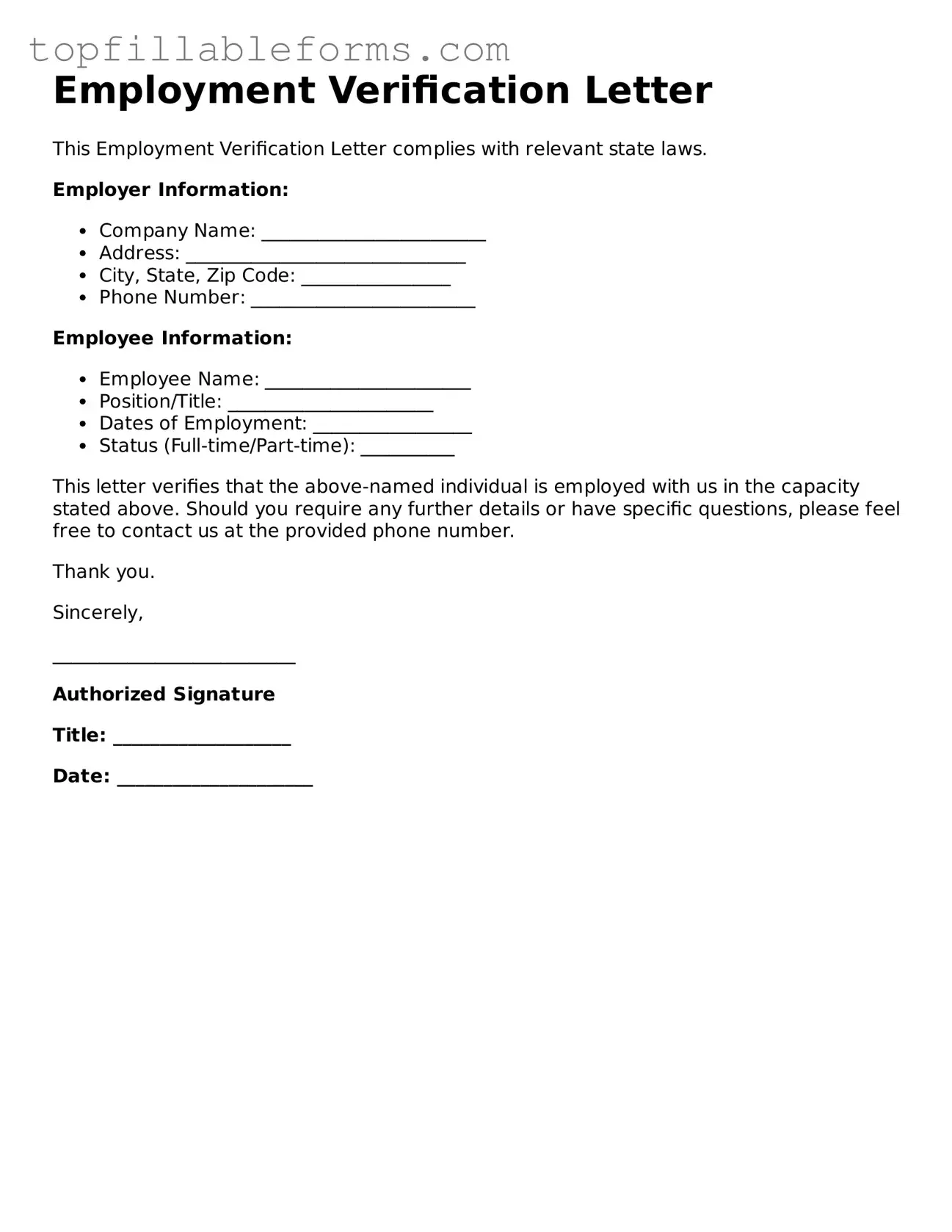Free Employment Verification Form
The Employment Verification form is a crucial document used to confirm an individual's employment status and history. This form serves as a reliable source for employers, lenders, and other entities needing to validate a person's job details. Understanding its importance can empower individuals to navigate various professional and financial opportunities more effectively.
Open Employment Verification Editor Here
